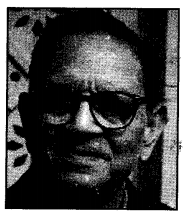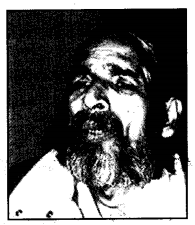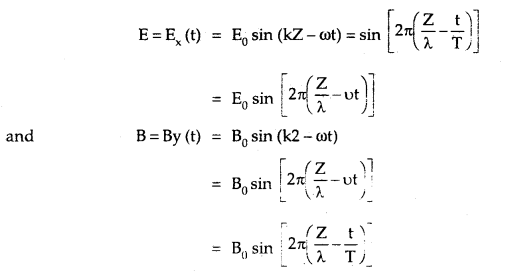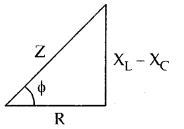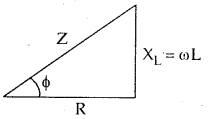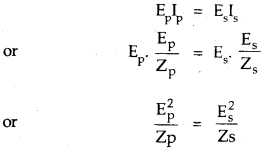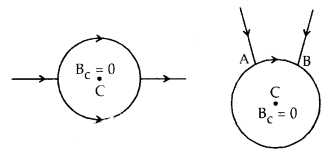By going through these CBSE Class 12 Hindi Notes Chapter 4 कैमरे में बंद अपाहिज Summary, Notes, students can recall all the concepts quickly.
कैमरे में बंद अपाहिज Summary Notes Class 12 Hindi Aroh Chapter 4
कैमरे में बंद अपाहिज कविता का सारांश
कैमरे में बंद अपाहिज कविता रघुवीर सहाय के काव्य-संग्रह ‘लोग भूल गए हैं से संकलित की गई है। इस कविता में कवि ने शारीरिक चुनौती को झेलते व्यक्ति से टेलीविजन कैमरे के सामने किस तरह के सवाल पूछे जाएंगे और कार्यक्रम को सफल बनाने के लिए उससे कैसी भंगिमा की अपेक्षा की जाएगी इसका लगभग सपाट तरीके से बयान करते हुए एक तरह से पीड़ा के साथ दृश्य संचारमाध्यम के संबध को रेखांकित किया है।
साथ ही कवि ने व्यंजना के माध्यम से ऐसे व्यक्ति की ओर इशारा किया है जो अपनी दुःख-दर्द, यातनावेदना को बेचना चाहता है। इस कविता में कवि ने शारीरिक चुनौती झेलते हुए लोगों के प्रति संवेदनशीलता व्यक्त की है। कवि ने इस कविता में बताया है कि अपने कार्यक्रम को सफल बनाने तथा किसी की पीड़ा को बहुत बड़े दर्शक वर्ग तक पहुँचाने के लिए दरदर्शनवाले किसी दल और शारीरिक रूप से कमजोर व्यक्ति को अपने कैमरे के सामने प्रस्तुत करते हैं। उससे अनेक तरह से सवाल पर सवाल पूछते हैं। उसे कैमरे के आगे बार-बार लाया जाता है। बार-बार उससे अपाहिज होने के बारे में सवाल पूछे जाते हैं
कि आपको अपाहिज होकर कैसा लगता है तथा उस कार्यक्रम को रोचक बनाने के लिए दूरसंचारवाले स्वयं प्रतिक्रिया व्यक्त करके बताते स हैं। अनेक ऐसे संवेदनशील सवालों को पूछ-पूछकर वे उस व्यक्ति को रुला देते हैं। दूरदर्शन के बड़े परदे पर उस व्यक्ति की आँसूभरी ” आँखों को दिखाया जाता है। इस प्रकार दूरदर्शनवाले बार-बार एक ऐसे अपाहिज व्यक्ति की पीड़ा को दर्शकों के समक्ष प्रस्तुत करते हैं।
कैमरे में बंद अपाहिज कवि परिचय
कवि-परिचय जीवन-परिचय-रघुवीर सहाय समकालीन हिंदी कविता के संवेदनशील कवि हैं। उनका जन्म सन् 1929 ई० में उत्तर प्रदेश के लखनऊ में हुआ था। उन्होंने लखनऊ विश्वविद्यालय से 1951 में एम० ए० अंग्रेजी की परीक्षा उत्तीर्ण की। एम० ए० करने के पश्चात ये पत्रकारिता क्षेत्र में कार्य करने लगे। इन्होंने ‘प्रतीक’, ‘वाक् और ‘कल्पना’ अनेक पत्रिकाओं के संपादक मंडल के सदस्य के रूप में भी कार्य किया।
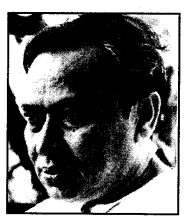
ततपश्चात कुछ समय तक आकाशवाणी में ऑल इंडिया रेडियो के हिंदी समाचार विभाग से भी सबद्ध रहे। ये 1971 से 1982 तक प्रसिद्ध पत्रिका दिनमान के संपादक रहे। इनको कवि के रूप में ‘दूसरा सप्तक’ से विशेष ख्याति प्राप्त हुई। इनकी साहित्य सेवा भावना के कारण ही इनको साहित्य अकादमी सम्मान से सम्मानित किया गया। अंत में दिल्ली में सन् 1990 ई० में ये अपना महान साहित्य संसार को सौंपकर चिरनिद्रा में लीन हो गए।
रचनाएँ-रघुवीर सहाय हिंदी साहित्य के सफल कवि हैं। इन्होंने समकालीन समाज पर अपनी लेखनी चलाई है। इन्होंने समकालीन अमानवीय दोषपूर्ण राजनीति पर व्यंग्योक्ति तथा नए ढंग की कविता का आविष्कार किया है। इनकी प्रमुख रचनाएँ निम्नलिखित हैं
काव्य-संग्रह-सीढ़ियों पर धूप में, आत्महत्या के विरुद्ध, हँसो, हँसो जल्दी हँसो, लोग भूल गए हैं, आत्महत्या के विरुद्ध इनका प्रसिद्ध काव्य-संग्रह है। सीढ़ियों पर धूप में ‘कविता-कहानी-निबंध’ का अनूठा संकलन है। काव्यगत विशेषताएँ-रघुवीर सहाय समकालीन हिंदी जगत के प्रसिद्ध कवि हैं। उनका काव्य समकालीन जगत का यथार्थ चित्रण प्रस्तुत करता है। उनके काव्य की प्रमुख विशेषताएँ निम्नलिखित हैं
(i) समाज का यथार्थ चित्रण-रघुवीर सहाय जी ने समकालीन समाज का यथार्थ चित्रण प्रस्तुत किया है। इनके काव्य में सामाजिक यथार्थ के प्रति विशिष्ट सजगता दृष्टिगोचर होती है। इन्होंने सामाजिक अव्यवस्था, शोषण, विडंबना आदि का यथार्थ चित्रण किया है।
(ii) अदम्य जिजीविषा का चित्रण-रघुवीर सहाय ने अपने काव्य में अदम्य जिजीविषा का वर्णन किया है। इन की अनेक कविताओं में इस विशेषता का अनूठा चित्रण हुआ है। ‘सीढ़ियों पर धूप में’ काव्य-संग्रह की प्रायः सब कविताओं में अदम्य जीने की इच्छा। की सफल अभिव्यक्ति हुई है।
“और जिंदगी के अंतिम दिनों में काम करते हुए बाप काँपती साइकिलों पर
भीड़ से रास्ता निकाल कर ले जाते हैं।
तब मेरी देखती हुई आँखें प्रार्थना करती हैं
और जब वापस आती हैं अपने शरीर में
तब दे दिया जा चुका होता है।”
(iii) मध्यवर्गीय जीवन का चित्रण-कवि ने समकालीन समाज के मध्यवर्गीय जीवन का यथार्थ चित्रांकन प्रस्तुत किया है। इन्होंने अपने काव्य में मध्यवर्गीय जीवन में परिव्याप्त तनावों और विडंबनाओं का वर्णन किया है। वह कवि और शेष दुनिया के बीच का अनुभूत तनाव है। जो कवि को निरंतर आंदोलित करता रहता है। इसके साथ-साथ कवि ने कुछ व्यक्ति और समूह के मध्य तनाव का चित्रांकन भी किया है।
(iv) भ्रष्टाचार का चित्रण-रघुवीर सहाय ने अपने काव्य में समकालीन समाज में फैले भ्रष्टाचार का यथार्थ चित्रण किया है। इन्होंने लोकतंत्र में व्याप्त भ्रष्टाचार की प्रत्येक गतिविधि का मार्मिक वर्णन किया है। ‘आत्महत्या के विरुद्ध’ एक नाटकीय एकालाप है | जिसमें भ्रष्टाचार को ध्वन्यात्मक रूप से अंकित किया गया है। इस संग्रह में कवि ने ‘समय आ गया है’ वाक्यांश के माध्यम से
